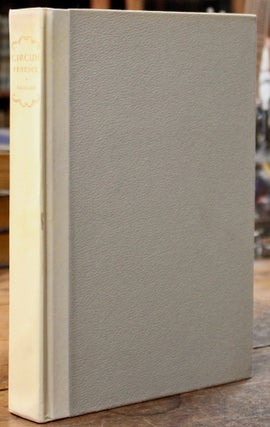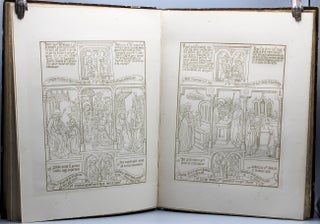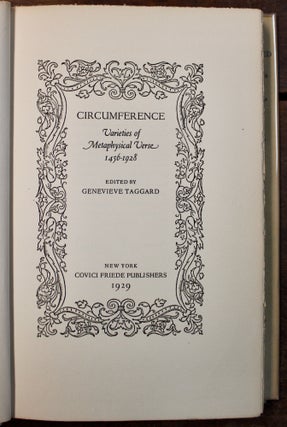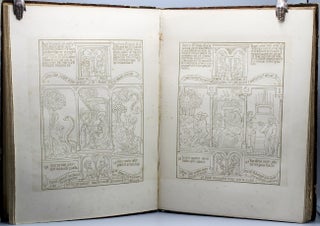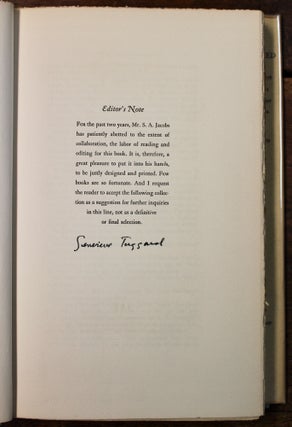Biblia Pauperum. Reproduced in facsimile from one of the copies in the British Museum, with an historical and bibliographical introduction, by J. Ph. Berjeau.
London: John Russell Smith, 1859. One of 250 copies. An excellent facsimile of Schreiber I, the first edition of the most popular and best known of block book texts, published in the Netherlands around 1466-70. There are nine known complete or partially complete copies of this edition. Spine, corners, board edges rubbed, intermittent light foxing. A good, sound copy. Publisher's brown morocco over marbled boards. Tall folio. 38 pp., [40] leaves of facsimile. Item #16992
Block books or xylographica were for a long time believed to precede printing from moveable type, invented by Gutenberg in the 1450s. Their crude appearance and the style of the woodcuts suggest an earlier date. But Allan H. Stevenson, writing in the 1960s, concluded from a study of the watermarks, that nearly all of them date from the 1460s or later. He did, however, establish the date for the earliest one, the Netherlandish Apocalypse as c. 1451-52. The latest block books, according to Stevenson, can be dated up to around 1530. (See "The Problem of Blockbooks" in Blockbücher des Mittelalters, Mainz: 1991, pp. 229-262). The woodcuts may simply have been copied from an older style. The majority of the surviving block books were printed in German, Dutch or Latin. The centers of block book production appear to have been in the Netherlands and the south of Germany. The first half dozen editions of the Biblia Pauperum are all Dutch. Each group of images in the Biblia Pauperum deals with one event from the
Gospels, which is accompanied by two smaller images depicting Old Testament events which prefigure the larger image. The parallels are explained in two blocks of text, and each of the three Biblical themes is introduced with a Latin verse. Above and below these panels are figures of saints with banners of text beneath them.
There has been much conjecture as to the audience of the Biblia Pauperum. ("Paupers' Bible). It has been traditionally stated that it was prepared for friars and other clergy, who were themselves "poor men," to educate the common people. However, it has become clear more recently that many of its readers were literate and devout persons who knew their Scripture well and could follow the narrative content. Labriola and Smeltz note in their introduction to The Bible of the Poor that it may also have been used to convert Jews.
Price: $400.00




